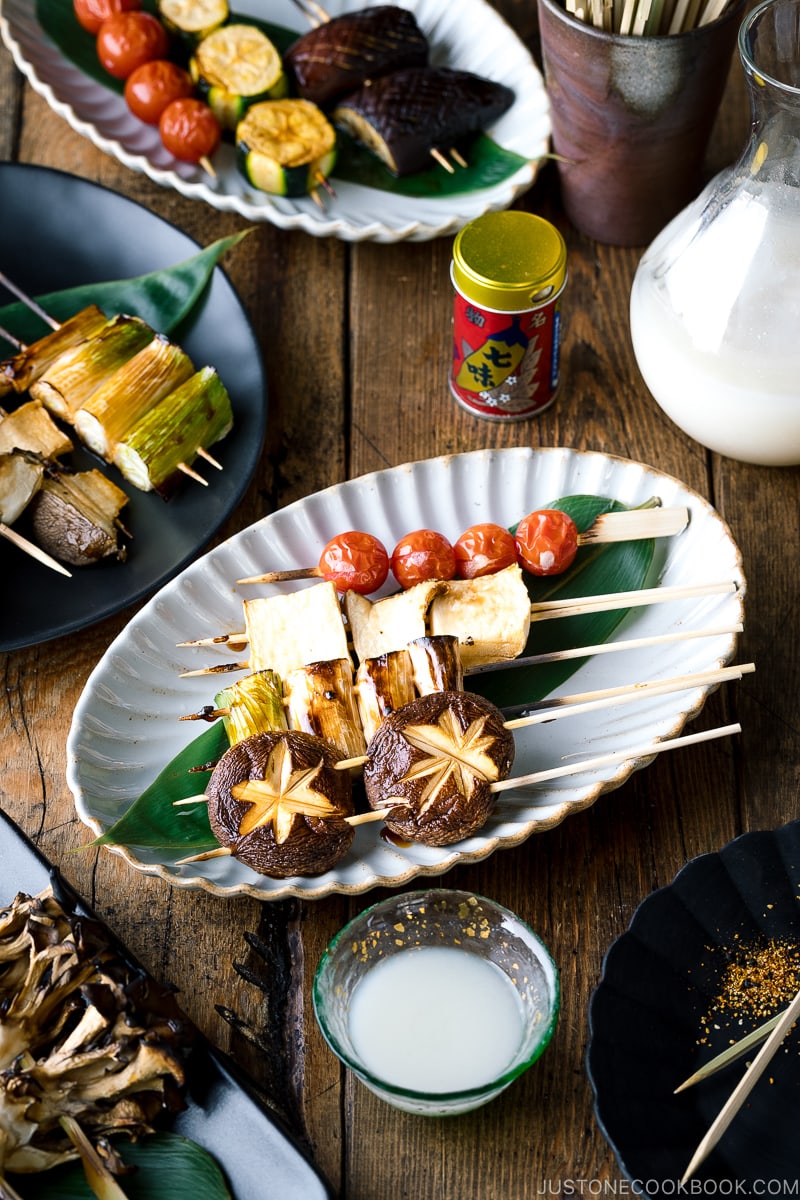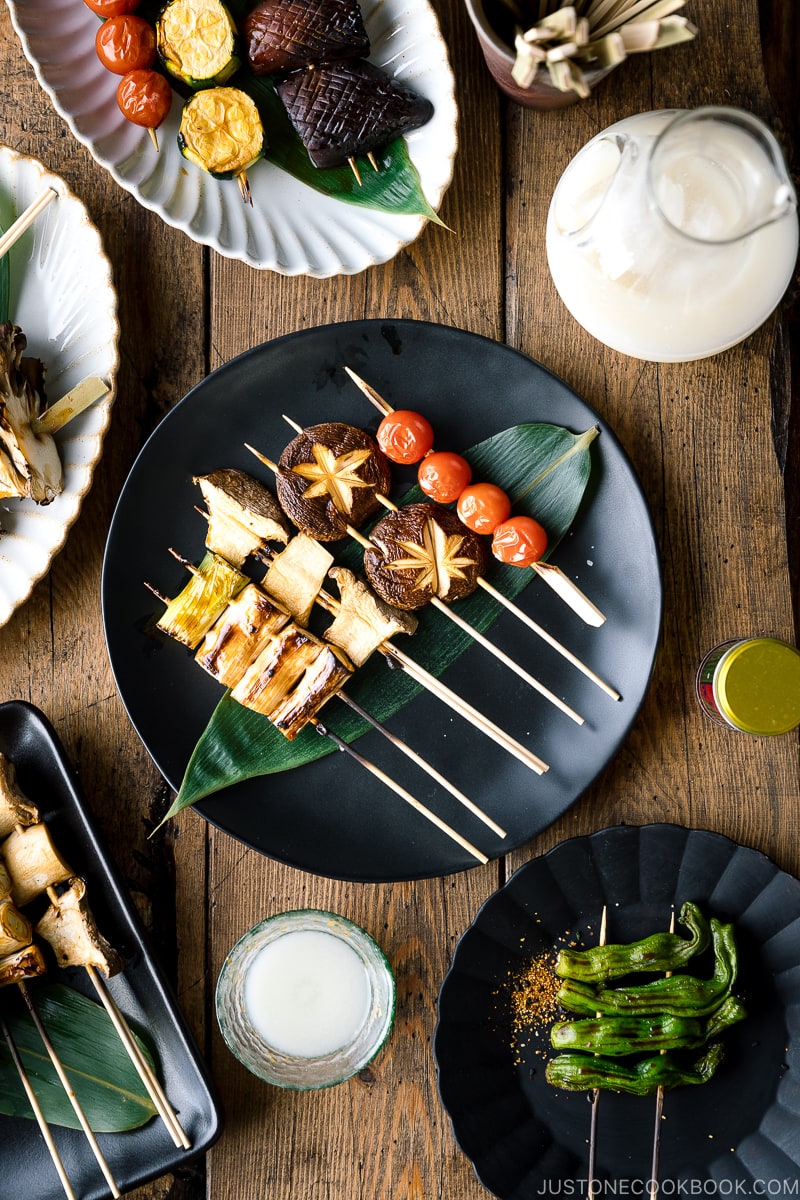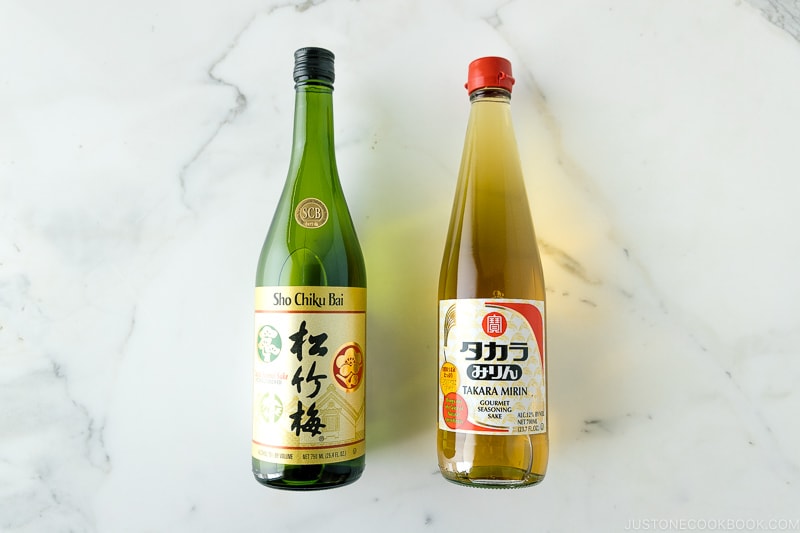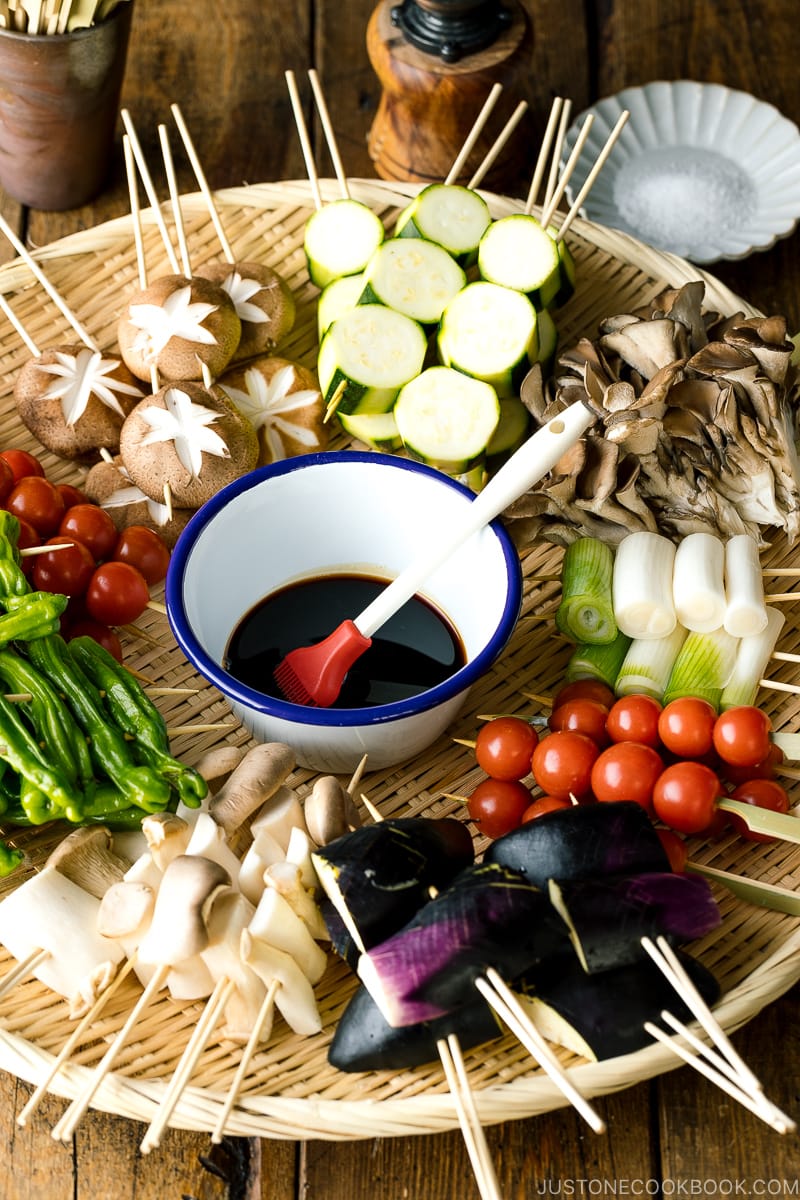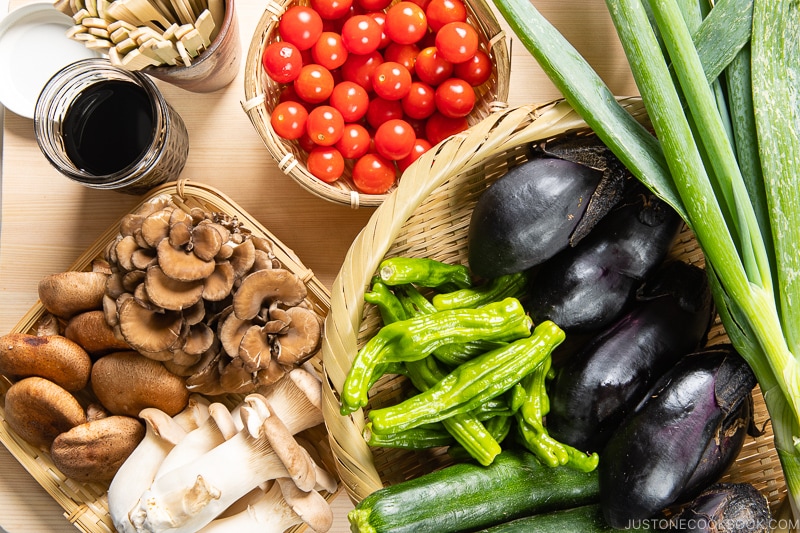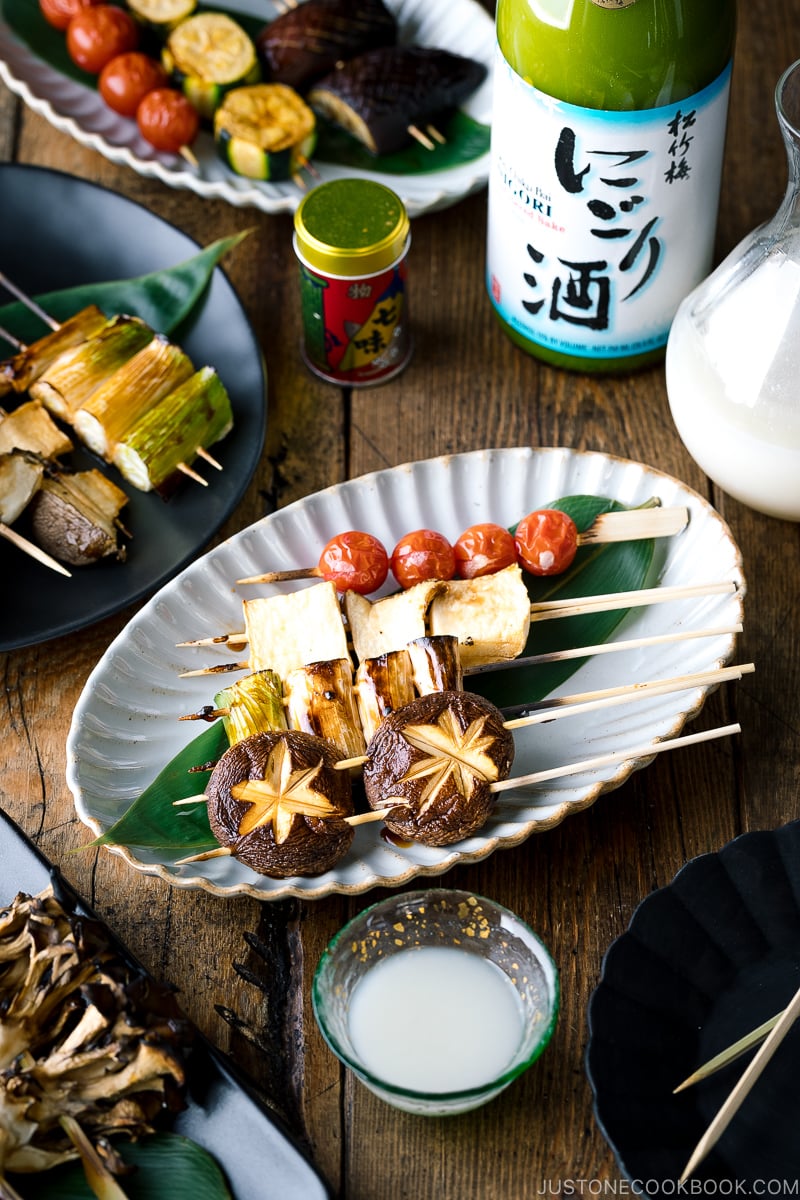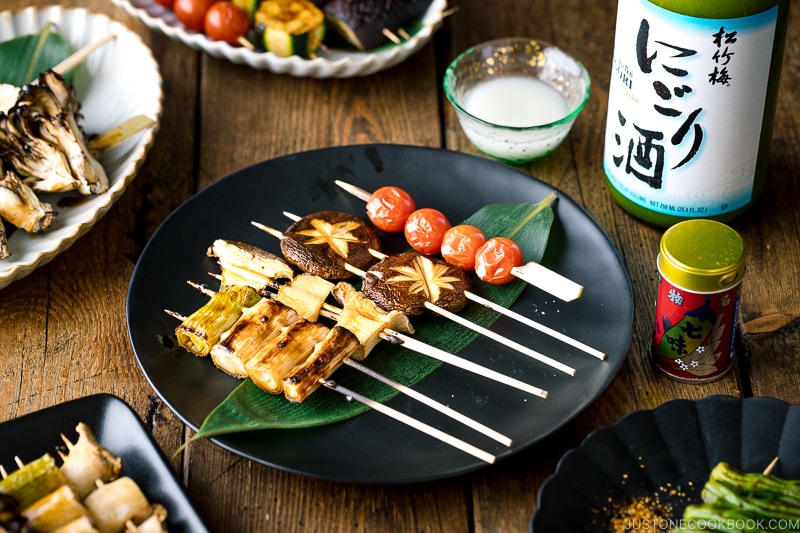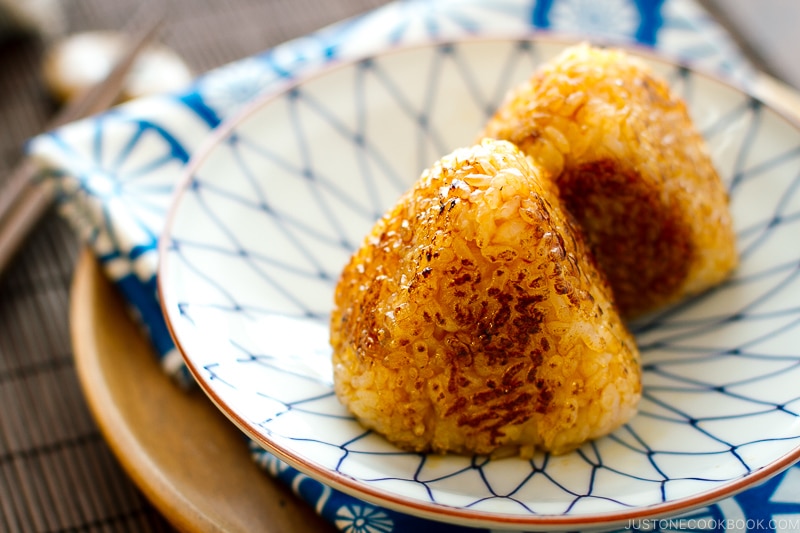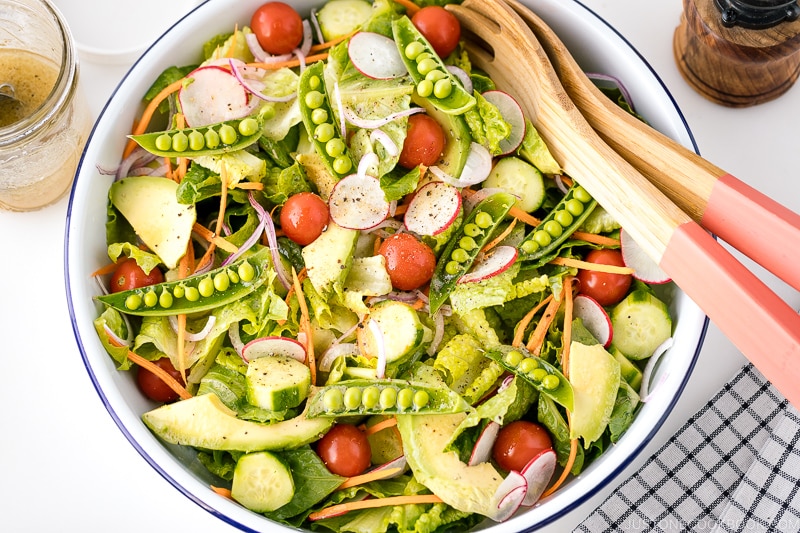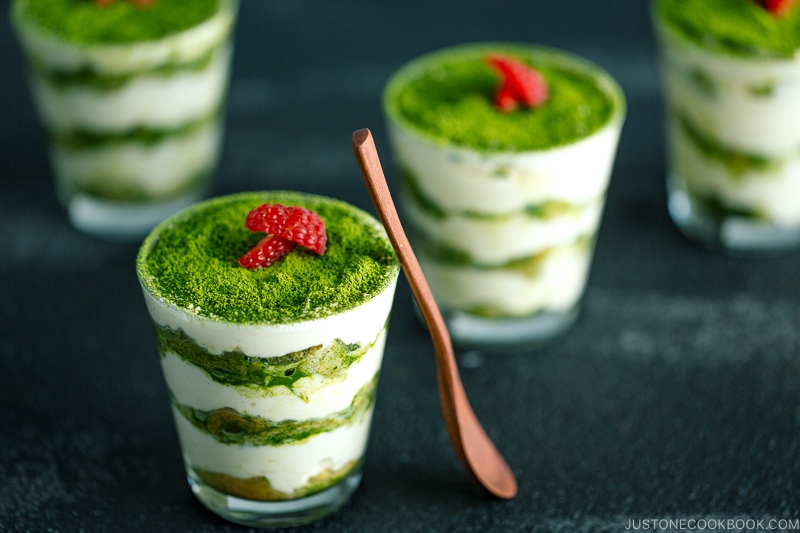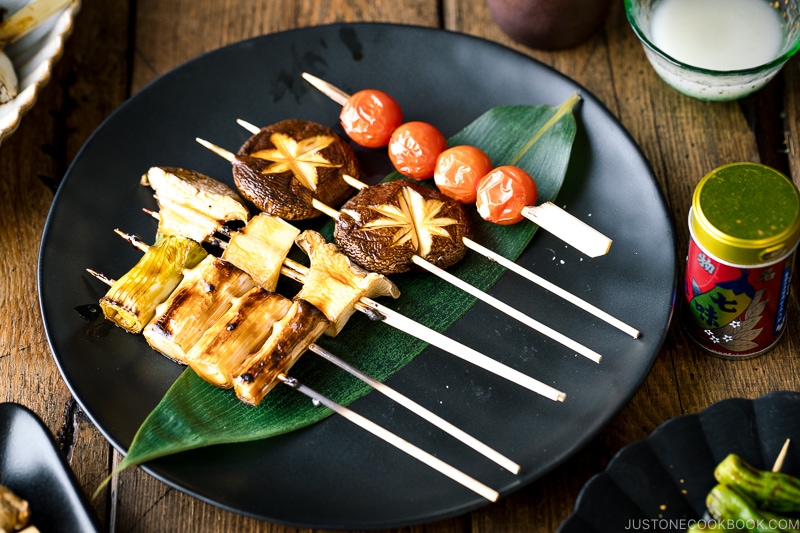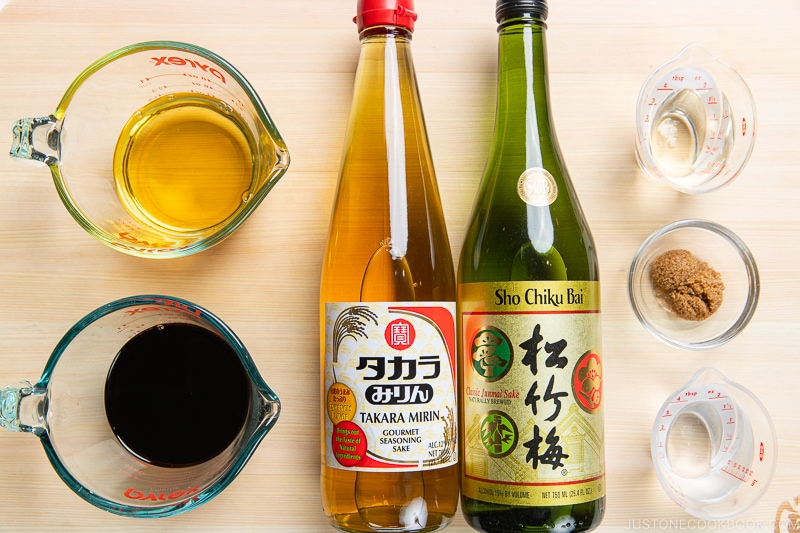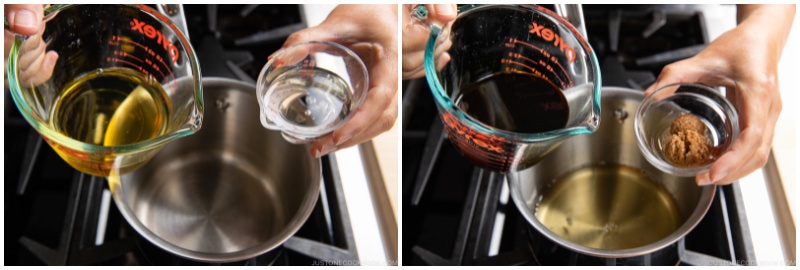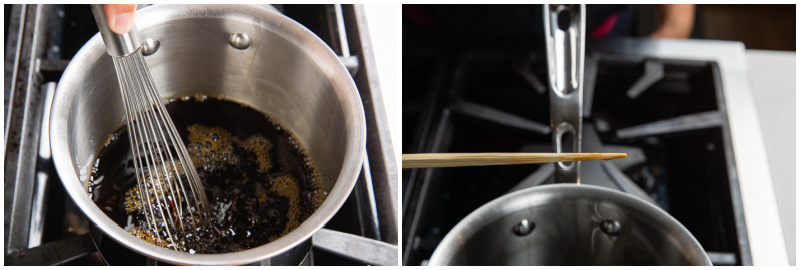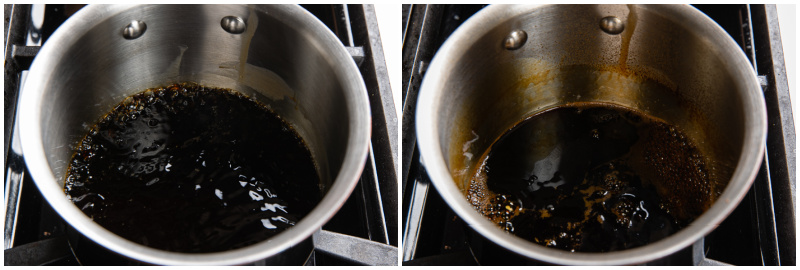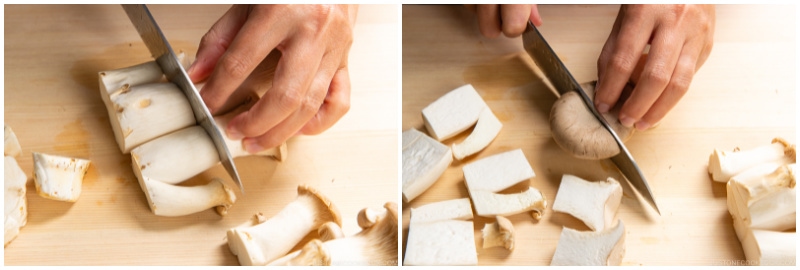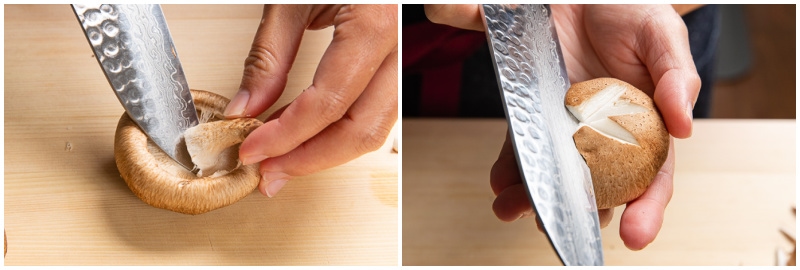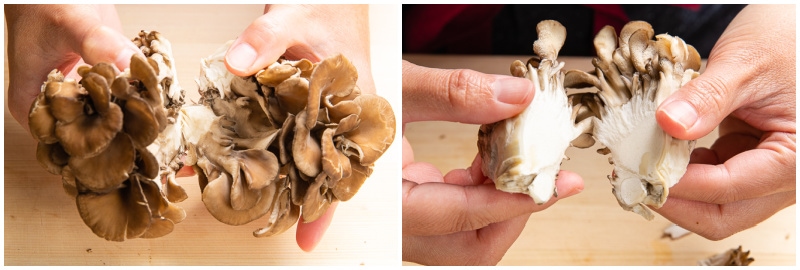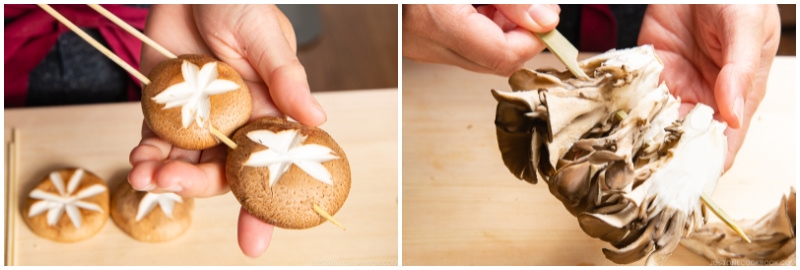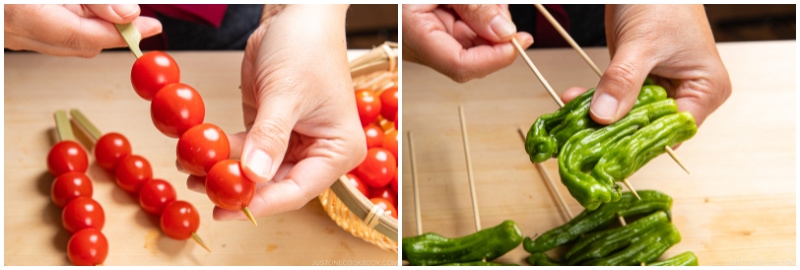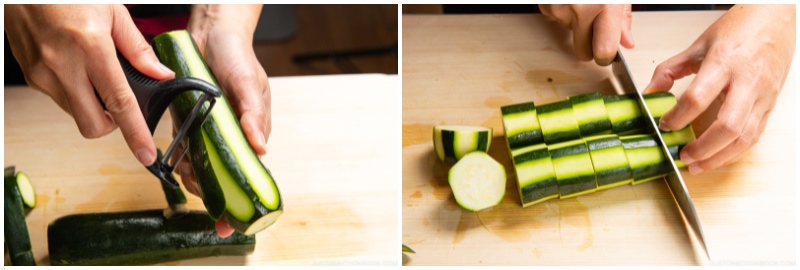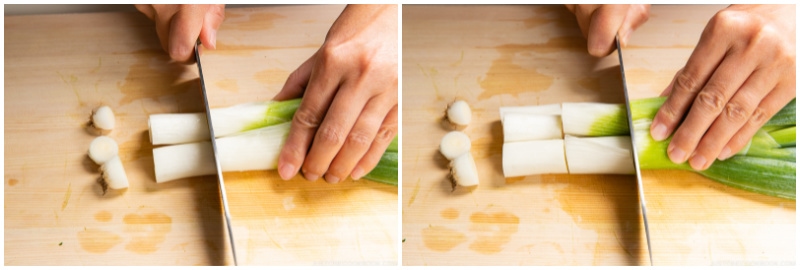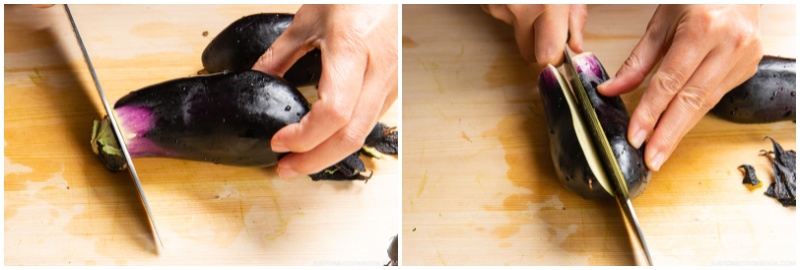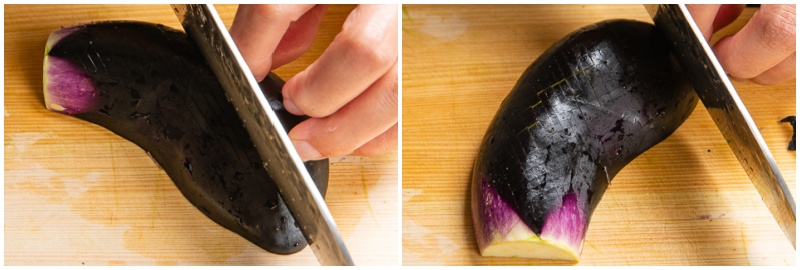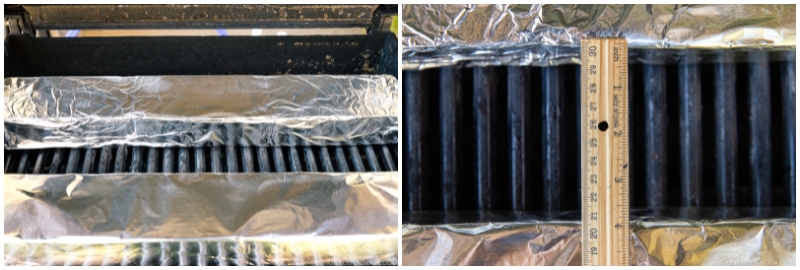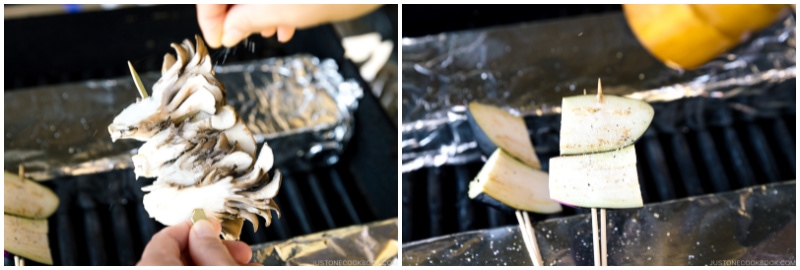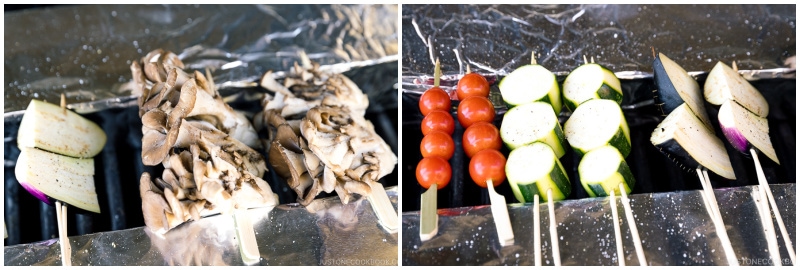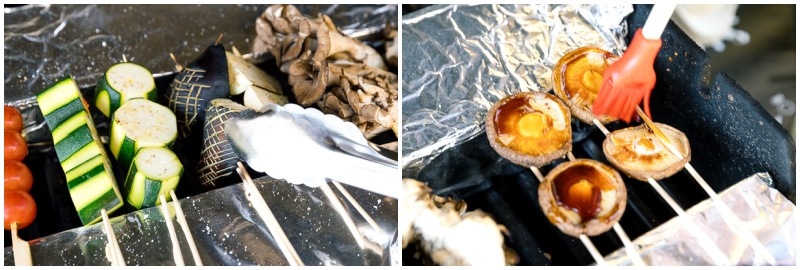The BBQ season is in full swing and there is no better way to keep your kitchen cool by putting the outdoor grill to work. Today, in our quest to include more plant-based, veggie forward recipes, let’s do Yakitori-Style Grilled Vegetables and Mushrooms (焼き野菜盛り合わせ)! For those looking for the real deal yakitori – Japanese grilled chicken skewer, I have the recipe for you too.
What ‘Yakitori’ Means in Japanese
Yakitori (焼き鳥) means ‘grilled’ (yaki, 焼き) ‘chicken’ (tori, 鳥) or Japanese-style grilled skewered chicken that is cooked over a charcoal fire. In Japan, you can find yakitori being served at specialty restaurants called yakitori-ya (焼き鳥屋), or bars that serve small-plate food called izakaya (居酒屋). Occasionally, ‘yakitori’ may imply non-chicken skewered food. When it’s grilled vegetables, we say Yaki Yasai (焼き野菜). When the vegetables are on a skewer, we can say Kushiyaki (串焼き), grilled food on a skewer. As many non-Japanese tend to search for vegetable or vegetarian yakitori ideas, I decided to use the word “yakitori” for our grilled vegetables (despite the inaccuracy) so you can find this recipe. However, as someone who tries to promote authentic Japanese cooking, I want to emphasize what “yakitori” truly means, and that is grilled chicken on a skewer. So don’t point at the grilled vegetable on a skewer and call it yakitori in front of your Japanese friend. 😊 You may also want to know that yakitori and izakaya restaurants serve very few vegetable options. I’d say there’s not a whole lot of selections (their speciality is the chicken after all). If you have fresh, seasonal vegetables you want to grill, bring them on!
Yakitori Sauce Called “Tare” タレ
Most yakitori restaurants offer only two options for flavoring: tare or salt. Pronounced [ta-REH], a sauce in Japanese is called tare (たれ, タレ). At a yakitori restaurant, it implies the thick, syrupy, caramelized sauce that is brushed onto the chicken or other ingredients right before serving (if you brush or dipped too early, it burns!). It’s easy to make yakitori sauce at home, and all you need is:
Soy sauce Sake Mirin Sugar (I use brown sugar)
You just need to simmer it down and once it cools, it thickens even more. You can easily make variations with green onions, ginger, and garlic, but the classic yakitori sauce uses only the above condiments, and that’s it.
The Important Condiments – Sake & Mirin
To make delicious yakitori sauce, I recommend using Sho Chiku Bai Junmai Sake and Takara Mirin. I’ve been partnering with them for a long time because I use them in my daily cooking and love them. Some of you ask if it’s okay to substitute or skip sake and/or mirin, but if you plan to make Japanese food in the near future, invest in these condiments. They are as equally important in Japanese cooking as soy sauce and miso, and they are one of 6 must-have Japanese condiments.
Sho Chiku Bai Junmai Sake: This is a great $6-7 drinking sake, and I use it for my cooking too! I do not use cooking sake as it contains salt and other (unnecessary) ingredients. Takara Mirin: Made with premium rice, Takara Mirin is a natural sweetener. It enhances flavors and umami and boosts a beautiful glaze.
You can find Sho Chiku Bai Junmai Sake and Takara Mirin in Japanese and Asian grocery stores.
How to Cook Yakitori Style Grilled Vegetables & Mushrooms
1. Let’s Talk About The Ingredients
At yakitori restaurants, ingredients are threaded onto short bamboo skewers. Although any types of veggies would work, here are my suggestions along with the typical choices served at restaurants.
Eggplant King oyster mushrooms Maitake mushrooms Negi (Japanese long onion) Shiitake mushrooms Shishito peppers Tomatoes Zucchini
2. DIY Yakitori Setup
You can purchase the special yakitori grill online these days but if you only want to grill yakitori on an occasional basis, you may not need a special grill. Instead, you can easily make the homemade DYI yakitori grill by setting two foil-covered bricks on the grates. This elevated surface setup mimics the steady, indirect heat of a traditional Japanese grill. For the charcoal taste, Mr. JOC highly recommends setting up the DIY yakitori grill over a charcoal grill. Here, we used our outdoor gas grill, hence we’re missing the tantalizing smokey wood flavor (oh well).
3. Quick Overview: Cooking Steps
Delicious Sake Pairing Recommendation
To cool down in the summer heat, we recommend pairing grilled food with Sho Chiku Bai Nigori Silky Mild Sake. Nigori sake differs from regular sake since it’s less filtered, resulting in a milky color and a more textured feel. As we raise the glass of creamy sake, the sweet aroma of Nigori Silky Mild reminds us of summer fruits and desserts, sweet and refreshing. Unlike any other alcoholic beverage, its full body and texture are gentle on the palate but the flavor is bold. The intensity allows it to pair with strongly flavored food like yakitori. Sipping the sake in between the grilled vegetables clears the palate gently, and allows us to enjoy and taste each skewer individually. Nigori Silky Mild Sake should always be served chilled so consider adding it to your summer party! You can find Sho Chiku Bai Nigori Silky Mild Sake at Japanese/Asian grocery stores and Total Wine & More, Safeway, Bevmo, etc.
Other Delicious Dishes to Serve with Yakitori
The variety of grilled vegetables and mushrooms are satisfying enough, but if you’re having guests over, you may need additional dishes to serve with them. Here are some of the options I have for you:
Rice Dishes
Yaki Onigiri Miso Yaki Onigiri Japanese Corn Rice Kimchi Fried Rice
Salads
Grilled Corn with Miso Butter Salad with Yuzu Miso Dressing Harusame Salad Japanese Potato Salad
Meat
Yakitori (Negima – Chicken and Leeks) Tsukune Shio Koji Chicken
Desserts
Matcha Tiramisu Basque Burnt Cheesecake (aka the easiest cheesecake ever!) Soy Sauce Caramel Ice Cream Chocolate Chiffon Cake Mango Lassi Popsicles
Hope you have a fantastic grilling season with your loved ones! Sign up for the free Just One Cookbook newsletter delivered to your inbox! And stay in touch with me on Facebook, Pinterest, YouTube, and Instagram for all the latest updates.
